Home> Company News> Instructions And Tips On How To Adjust Rexroth Hydraulic Pump Pressure
- AddressToh Guan Centre, 31/F,69 Toh Guan Rd E, Singapore 608609
- Factory AddressToh Guan Centre, 31/F,69 Toh Guan Rd E, Singapore 608609
- Worktime9:00-18:00
- Phone(Working Time)0065-31591578
- Phone(Nonworking Time)0065-31591578
- Fax0065-31591339
Instructions And Tips On How To Adjust Rexroth Hydraulic Pump Pressure
2023-04-25 09:12:49Hydraulic pump pressure adjustment is the process of modifying the pressure settings of a hydraulic pump to ensure that it operates at optimal performance levels. The adjustment of hydraulic pump pressure is critical for ensuring that hydraulic systems function effectively and efficiently. Maintaining proper hydraulic pump pressure is essential for the safety of hydraulic systems, as well as to reduce the risk of costly repairs and downtime.
Rexroth hydraulic pumps are widely used in many industries, including manufacturing, construction, and agriculture. They are renowned for their high-performance capabilities, reliability, and durability. Proper maintenance and adjustment of Rexroth hydraulic pumps can significantly extend their lifespan and improve their performance.
This guide will provide a comprehensive overview of hydraulic pump pressure adjustment, its importance, and a step-by-step guide on how to adjust Rexroth hydraulic pump pressure. Additionally, this guide will cover troubleshooting hydraulic pump pressure issues, maintenance and upkeep of hydraulic pumps, frequently asked questions, best practices, and final tips and recommendations for adjusting Rexroth hydraulic pump pressure.
Understanding Hydraulic Pump Pressure
Hydraulic pressure is the force exerted by a liquid in a confined space. In hydraulic systems, pressure is created by the pump, which forces hydraulic fluid through a series of valves and cylinders to perform work. The pressure created by the hydraulic pump determines the force that the system can generate, and as such, it is essential to maintain the correct pressure level for optimal performance.
Several factors affect hydraulic pump pressure, including the pump's design, the size of the hydraulic system, the type of fluid used, and the temperature of the system. Additionally, different types of hydraulic pumps have different pressure ranges. For instance, gear pumps have a pressure range of 2000-2500 psi, while piston pumps have a pressure range of 4000-5000 psi.
There are three main types of hydraulic pumps: gear pumps, vane pumps, and piston pumps. Gear pumps are the most basic type of hydraulic pump, and they are widely used in low-pressure applications. Vane pumps are more efficient than gear pumps and are commonly used in medium-pressure applications. Piston pumps are the most complex and expensive type of hydraulic pump, and they are used in high-pressure applications.
Understanding hydraulic pump pressure is crucial for maintaining and troubleshooting hydraulic systems. By monitoring the pressure levels, it is possible to detect any issues and take corrective measures to prevent damage to the hydraulic system. Additionally, by selecting the right type of hydraulic pump with the appropriate pressure range, it is possible to achieve optimal performance and efficiency.
How to Adjust Rexroth Hydraulic Pump Pressure
Adjusting the hydraulic pump pressure is a critical process that helps to ensure optimal performance and longevity of your Rexroth hydraulic pump. Improper pressure settings can lead to premature wear and tear, reduced efficiency, and even complete system failure. In this section, we'll take a closer look at the steps involved in adjusting the hydraulic pump pressure for your Rexroth pump.
Tools and equipment required for adjusting hydraulic pump pressure
Before getting started with the adjustment process, you'll need to gather a few tools and equipment. Here's a list of what you'll need:
-
A pressure gauge: This is the most important tool you'll need for adjusting the hydraulic pump pressure. Make sure to choose a high-quality pressure gauge that is accurate and reliable.
-
A wrench set: You'll need a set of wrenches to loosen and tighten the fittings and bolts on the hydraulic pump.
-
A flathead screwdriver: This will come in handy for adjusting the pressure relief valve.
-
A hydraulic fluid pressure chart: This chart will provide you with the recommended pressure settings for your Rexroth hydraulic pump.
Step-by-step guide on how to adjust Rexroth hydraulic pump pressure
Now that you have all the necessary tools and equipment, let's walk through the steps involved in adjusting the hydraulic pump pressure:
Step 1: Identify the pressure relief valve The pressure relief valve is typically located on the hydraulic pump. It is responsible for regulating the pressure in the hydraulic system. Use the manual provided by Rexroth to identify the location of the pressure relief valve.
Step 2: Install the pressure gauge Attach the pressure gauge to the test port on the hydraulic pump. Make sure the gauge is securely attached and that there are no leaks.
Step 3: Start the engine Start the engine and allow it to run for a few minutes to warm up the hydraulic fluid. This will ensure accurate pressure readings.
Step 4: Measure the pressure With the engine running, use the pressure gauge to measure the hydraulic pump pressure. Compare the reading to the recommended pressure settings provided in the hydraulic fluid pressure chart.
Step 5: Adjust the pressure relief valve If the pressure is too high or too low, use the flathead screwdriver to adjust the pressure relief valve. Turn the screw clockwise to increase pressure and counterclockwise to decrease pressure. Keep adjusting the valve until you reach the recommended pressure setting.
Step 6: Re-measure the pressure Once you have adjusted the pressure relief valve, re-measure the hydraulic pump pressure to ensure that it falls within the recommended range.
Step 7: Shut down the engine Once you have achieved the desired pressure setting, shut down the engine and remove the pressure gauge.
Precautions and safety measures to observe during the adjustment process
Adjusting hydraulic pump pressure can be a dangerous process if proper safety measures are not observed. Here are some precautions and safety measures to keep in mind:
-
Always wear protective gear such as safety glasses and gloves to prevent injury.
-
Never attempt to adjust the pressure relief valve while the engine is running.
-
Always follow the manufacturer's instructions and recommended pressure settings.
-
Do not exceed the maximum pressure rating of the hydraulic system.
-
Always use high-quality tools and equipment to prevent equipment failure and injury.
Adjusting the hydraulic pump pressure for your Rexroth hydraulic pump is an important maintenance task that should not be overlooked. With the right tools and equipment, and by following the steps outlined in this guide, you can adjust the hydraulic pump pressure safely and accurately. Remember to always follow the manufacturer's instructions and recommended pressure settings to ensure optimal performance and longevity of your hydraulic system.
Troubleshooting Hydraulic Pump Pressure Issues
Hydraulic pump pressure issues can be frustrating and costly to deal with. They can lead to reduced efficiency, premature wear and tear, and even system failure if not resolved promptly. In this section, we'll discuss some common hydraulic pump pressure problems, how to diagnose them, and tips for resolving them.
Common hydraulic pump pressure problems
-
Low hydraulic pump pressure: This can be caused by a clogged or dirty filter, worn out or damaged hydraulic pump components, or a malfunctioning pressure relief valve.
-
High hydraulic pump pressure: This can be caused by a malfunctioning pressure relief valve, a blocked or restricted hydraulic line, or a malfunctioning hydraulic pump.
-
Fluctuating hydraulic pump pressure: This can be caused by a malfunctioning pressure relief valve, a damaged or worn out hydraulic pump, or a clogged or dirty filter.
How to diagnose hydraulic pump pressure issues
Diagnosing hydraulic pump pressure issues requires a thorough understanding of hydraulic systems and their components. Here are some steps you can take to diagnose hydraulic pump pressure issues:
Step 1: Check the hydraulic fluid level and quality Low hydraulic fluid levels or dirty and contaminated hydraulic fluid can cause pressure issues. Check the hydraulic fluid level and quality and replace if necessary.
Step 2: Check the hydraulic filter A clogged or dirty hydraulic filter can cause low or fluctuating hydraulic pump pressure. Check the hydraulic filter and replace if necessary.
Step 3: Check the pressure relief valve A malfunctioning pressure relief valve can cause high or fluctuating hydraulic pump pressure. Check the pressure relief valve and replace if necessary.
Step 4: Check the hydraulic pump A worn out or damaged hydraulic pump can cause low or fluctuating hydraulic pump pressure. Check the hydraulic pump and replace if necessary.
Tips for resolving hydraulic pump pressure issues
-
Replace clogged or dirty hydraulic filters: Regularly replacing the hydraulic filter can help prevent pressure issues.
-
Maintain proper hydraulic fluid levels and quality: Regularly checking the hydraulic fluid level and quality can help prevent pressure issues.
-
Replace worn out or damaged hydraulic pump components: Worn out or damaged hydraulic pump components can cause pressure issues. Replacing them can help resolve the problem.
-
Replace malfunctioning pressure relief valves: A malfunctioning pressure relief valve can cause pressure issues. Replacing it can help resolve the problem.
-
Unblock or replace blocked or restricted hydraulic lines: Blocked or restricted hydraulic lines can cause pressure issues. Unblock or replace them to resolve the problem.
-
Seek professional help: If you are unable to diagnose or resolve hydraulic pump pressure issues, seek professional help. A hydraulic system expert can help identify and resolve the problem.
Hydraulic pump pressure issues can be frustrating and costly to deal with. Regular maintenance and upkeep can help prevent these issues from occurring. However, if you do experience pressure issues, following the steps outlined in this section can help diagnose and resolve the problem. Remember to always follow manufacturer's instructions and recommended maintenance schedules to ensure optimal performance and longevity of your hydraulic system.
Maintenance and Upkeep
Maintaining proper hydraulic pump pressure is crucial to ensuring the longevity and optimal performance of your Rexroth hydraulic pump. Regular maintenance and upkeep can help prevent pressure issues and extend the life of your hydraulic system. In this section, we'll discuss the importance of regular maintenance, recommended maintenance schedules for Rexroth hydraulic pumps, and tips for ensuring optimal hydraulic pump pressure performance.
Importance of regular maintenance for hydraulic pump pressure
Regular maintenance is important for several reasons:
-
Prevents premature wear and tear: Regular maintenance can help prevent premature wear and tear on hydraulic pump components, which can lead to pressure issues and even system failure.
-
Ensures optimal performance: Regular maintenance can help ensure that your hydraulic system is operating at its optimal performance level, which can help increase efficiency and productivity.
-
Saves money: Regular maintenance can help prevent costly repairs and replacements down the line, which can save you money in the long run.
Recommended maintenance schedule for Rexroth hydraulic pumps
Rexroth recommends the following maintenance schedule for their hydraulic pumps:
-
Daily maintenance: Check hydraulic fluid levels, inspect the system for leaks, and check for any abnormal noise or vibration.
-
Weekly maintenance: Check and clean the hydraulic filter, inspect the hydraulic pump and motor for leaks and damage, and check the hydraulic lines for leaks and damage.
-
Monthly maintenance: Check the pressure relief valve and adjust if necessary, check the hydraulic fluid for contamination, and inspect the hydraulic hoses for wear and tear.
-
Quarterly maintenance: Check and clean the hydraulic tank, inspect the hydraulic cylinders and valves for leaks and damage, and check the hydraulic fluid for oxidation and acidity.
-
Annual maintenance: Inspect and replace hydraulic pump components as necessary, flush and replace the hydraulic fluid, and check the hydraulic system for any potential issues.
Tips for ensuring optimal hydraulic pump pressure performance
-
Follow the recommended maintenance schedule: Following the recommended maintenance schedule can help prevent pressure issues and ensure optimal performance.
-
Use high-quality hydraulic fluid: Using high-quality hydraulic fluid can help prevent contamination and extend the life of your hydraulic system.
-
Keep the hydraulic system clean: Keeping the hydraulic system clean can help prevent contamination and ensure optimal performance.
-
Regularly inspect hydraulic pump components: Regularly inspecting hydraulic pump components can help prevent premature wear and tear and ensure optimal performance.
-
Seek professional help: If you are unsure how to perform maintenance on your hydraulic system, seek professional help. A hydraulic system expert can help ensure that your system is properly maintained and functioning at its optimal level.
Conclusion
Regular maintenance and upkeep are essential for ensuring the longevity and optimal performance of your Rexroth hydraulic pump. Following the recommended maintenance schedule, using high-quality hydraulic fluid, keeping the hydraulic system clean, and regularly inspecting hydraulic pump components can help prevent pressure issues and ensure optimal performance. Remember to seek professional help if you are unsure how to perform maintenance on your hydraulic system.Frequently Asked Questions
In this section, we'll answer some common questions about hydraulic pump pressure adjustment and troubleshooting.
Q: How do I know if my hydraulic pump pressure needs to be adjusted?
A: Signs that your hydraulic pump pressure needs to be adjusted include low or high hydraulic pump pressure, fluctuating hydraulic pump pressure, or unusual noise or vibration from the hydraulic system.
Q: What should I do if I can't adjust the hydraulic pump pressure to the recommended setting?
A: If you are unable to adjust the hydraulic pump pressure to the recommended setting, check for any potential issues such as a malfunctioning pressure relief valve, a blocked or restricted hydraulic line, or a damaged hydraulic pump component. If you are unable to diagnose or resolve the problem, seek professional help.
Q: How often should I check my hydraulic pump pressure?
A: It is recommended that you check your hydraulic pump pressure regularly, ideally as part of a regular maintenance schedule. The frequency of checks will depend on the specific requirements of your hydraulic system and manufacturer recommendations.
Q: How do I troubleshoot low hydraulic pump pressure?
A: To troubleshoot low hydraulic pump pressure, check the hydraulic fluid level and quality, check the hydraulic filter, and inspect the pressure relief valve, hydraulic pump, and hydraulic lines for any potential issues.
Q: How do I troubleshoot high hydraulic pump pressure?
A: To troubleshoot high hydraulic pump pressure, check for any blockages or restrictions in the hydraulic lines, inspect the pressure relief valve for any potential issues, and check the hydraulic pump for any damage or wear and tear.
Q: How do I prevent hydraulic pump pressure issues?
A: To prevent hydraulic pump pressure issues, regularly maintain and upkeep your hydraulic system, follow the recommended maintenance schedule, use high-quality hydraulic fluid, keep the hydraulic system clean, and regularly inspect hydraulic pump components for wear and tear.
Q: How can I ensure accurate and consistent hydraulic pump pressure adjustment?
A: To ensure accurate and consistent hydraulic pump pressure adjustment, use high-quality tools and equipment, follow the manufacturer's instructions and recommended pressure settings, and observe proper safety measures during the adjustment process.
Q: Can I adjust hydraulic pump pressure myself, or do I need to seek professional help?
A: You can adjust hydraulic pump pressure yourself if you have the necessary tools, equipment, and knowledge. However, if you are unsure or uncomfortable performing the adjustment, seek professional help.
Q: How much does it cost to adjust hydraulic pump pressure?
A: The cost of adjusting hydraulic pump pressure will depend on the specific requirements of your hydraulic system and the cost of any necessary tools and equipment. If you are seeking professional help, the cost will also depend on the rates charged by the professional.
Q: How long does it take to adjust hydraulic pump pressure?
A: The time it takes to adjust hydraulic pump pressure will depend on the specific requirements of your hydraulic system and your experience and skill level. It may take anywhere from a few minutes to several hours to complete the adjustment process.
Best Practices
Achieving accurate and consistent hydraulic pump pressure adjustment requires proper tools, equipment, and knowledge. In this section, we'll discuss some tips and best practices for achieving optimal hydraulic pump pressure performance, including the importance of following the manufacturer's instructions and recommendations.
Tips and best practices for achieving accurate and consistent hydraulic pump pressure adjustment
-
Use high-quality tools and equipment: Using high-quality tools and equipment can help ensure accurate and consistent hydraulic pump pressure adjustment.
-
Follow the manufacturer's instructions and recommended pressure settings: Following the manufacturer's instructions and recommended pressure settings is crucial for achieving accurate and consistent hydraulic pump pressure adjustment.
-
Observe proper safety measures: Observing proper safety measures, such as wearing protective gear and never attempting to adjust the pressure relief valve while the engine is running, is important for preventing injury.
-
Start with a warm engine: Starting with a warm engine can help ensure accurate pressure readings and optimal hydraulic pump pressure performance.
-
Monitor pressure readings: Monitoring pressure readings during the adjustment process can help ensure accurate and consistent hydraulic pump pressure adjustment.
-
Keep the hydraulic system clean: Keeping the hydraulic system clean can help prevent contamination and ensure optimal performance.
-
Seek professional help if unsure: If you are unsure how to adjust hydraulic pump pressure or encounter any issues during the adjustment process, seek professional help.
Importance of following manufacturer's instructions and recommendations
Following the manufacturer's instructions and recommendations is crucial for achieving accurate and consistent hydraulic pump pressure adjustment. Manufacturers provide specific guidelines and pressure settings based on the specific requirements of their hydraulic pumps. Deviating from these guidelines and settings can result in inaccurate or inconsistent hydraulic pump pressure, which can lead to reduced efficiency, premature wear and tear, and even system failure.
In addition to following the manufacturer's instructions and recommendations, it is also important to use genuine parts and components recommended by the manufacturer. Using non-genuine parts and components can result in inaccurate or inconsistent hydraulic pump pressure, as well as reduced efficiency and premature wear and tear.
Conclusion
Achieving accurate and consistent hydraulic pump pressure adjustment requires proper tools, equipment, and knowledge. Following the manufacturer's instructions and recommendations, using high-quality tools and equipment, observing proper safety measures, and monitoring pressure readings during the adjustment process are all important for achieving optimal hydraulic pump pressure performance. Remember to always follow the manufacturer's instructions and recommendations to ensure optimal performance and longevity of your hydraulic system.
only need to #8
Conclusion
In conclusion, hydraulic pump pressure adjustment is a crucial aspect of maintaining the optimal performance and longevity of your Rexroth hydraulic pump. Understanding hydraulic pressure and its effects, the factors affecting hydraulic pump pressure, and the types of hydraulic pumps and their pressure ranges is important for ensuring accurate and consistent hydraulic pump pressure adjustment.
Adjusting Rexroth hydraulic pump pressure requires the use of proper tools and equipment, following the manufacturer's instructions and recommended pressure settings, and observing proper safety measures. Diagnosing and resolving hydraulic pump pressure issues requires a thorough understanding of hydraulic systems and their components, as well as regular maintenance and upkeep.
Regular maintenance and upkeep, including following the recommended maintenance schedule, using high-quality hydraulic fluid, keeping the hydraulic system clean, and regularly inspecting hydraulic pump components for wear and tear, can help prevent pressure issues and ensure optimal hydraulic pump pressure performance.
Remember to always follow the manufacturer's instructions and recommendations to ensure optimal performance and longevity of your hydraulic system. If you are unsure or uncomfortable performing hydraulic pump pressure adjustment or troubleshooting, seek professional help from a hydraulic system expert. By following these tips and best practices, you can ensure accurate and consistent hydraulic pump pressure adjustment and optimal performance of your Rexroth hydraulic pump.
Mud pump bearings Turntable bearings Agricultural bearings Angular Contact Bearings Duplex Angular Contact Bearings Industrial bearings Iron and steel industry bearings Power transmission bearing Hydrostatic centripetal bearing Ball Thrust Bearings Papermaking Machinery bearings Agricultural machinery bearing McGILL bearing Rexroth pump assay Komatsu motor parts BOSCH Fuel injector Hitachi excavator parts Axial Piston Pumps Sauer Danfoss pump Eaton pump parts Nachi pump assay Linde pump Mining Construction Ball Bearings Linear Bearings vane pumps gear pumps inc piston pumps Thin-Section Ball Bearings Adapter Sleeves pressure valves gear reducer relief valves Mcgill Bearing Die & Mold Plain-Bearing Bushings FAG Bearing Singapore SKF bearing Accessories SKF bearing Housing SKF bearing shaft seals SKF Bearing units Bearing Distributors Inventory Oilfield mud pump bearings Heavy-Duty Shaker Screen Spherical Double row double row tapered roller bearings (inch series) Multi-Row Roller Bearings NTN Four Row Cylindrical Roller Bearings NTN SL Type Cylindrical Roller Bearings NTN SL Type Cylindrical Roller Bearings for Sheaves NTN Single Row Tapered Roller Bearings NTN Double Row Tapered Roller Bearings NTN Four Row Tapered Roller Bearings NTN Spherical Roller Bearings NTN Thrust Bearings NTN Bearings for special applications NTN DOUBLE-ROW CYLINDRICAL ROLLER BEARINGS NSK FULL-COMPLEMENT CYLINDRICAL ROLLER BEARINGS NSK SINGLE-ROW TAPERED ROLLER BEARINGS NSK YUKEN Piston pump DOUBLE-ROW TAPERED ROLLER BEARINGS NSK SPHERICAL ROLLER BEARINGS NSK SINGLE-DIRECTION THRUST BALL BEARINGS NSK CYLINDRICAL ROLLER THRUST BEARINGS NSK TAPERED ROLLER THRUST BEARINGS NSK SPHERICAL THRUST ROLLER BEARINGS NSK ROLLING BEARINGS FOR STEEL MILLS NSK SEALED-CLEAN FOUR-ROW TAPERED ROLLER BEARINGS NSK FOUR-ROW CYLINDRICAL ROLLER BEARINGS NSK DOUBLE-ROW TAPERED ROLLER BEARINGS NSK Roll Bearings for Mills NSK Ball Bearings NSK TAPERED ROLLER THRUST BEARINGS For Adjusting Screws NSK Thin Section Bearings Kaydon Double row double row tapered roller bearings (inch series) Double direction thrust tapered roller bearings Full complement Tapered roller Thrust bearing Thrust cylindrical roller bearings Thrust spherical roller bearings Sealed Four Row Tapered Roller Bearings Four row tapered roller bearings Double outer double row tapered roller bearings TDO double-row tapered roller bearings Single row tapered roller bearings inch Double inner double row tapered roller bearings TDI Double inner double row tapered roller bearings inch Spherical roller bearing Four row cylindrical roller bearings Single row cylindrical roller bearings Full row of cylindrical roller bearings Double row cylindrical roller bearings Double row full complement cylindrical roller bearings Four point contact ball bearings Double row angular contact ball bearings Deep groove ball bearings ANGULAR CONTACT THRUST BALL BEARINGS TYPE TVL DTVL angular contact thrust ball bearing. TP thrust cylindrical roller bearing TPS thrust cylindrical roller bearing THRUST SPHERICAL ROLLER BEARINGS TYPES TSR-EJ AND TSR-EM TTHD THRUST TAPERED ROLLER BEARINGS TTHDFL thrust tapered roller bearing TTHDFLSA THRUST TAPERED ROLLER BEARINGS THRUST TAPERED ROLLER BEARINGS TYPES TTSP, TTSPS AND TTSPL THRUST TAPERED ROLLER BEARINGS – TYPES TTC, TTCS AND TTCL SCREWDOWN BEARINGS – TYPES TTHDSX/SV AND TTHDFLSX/SV THRUST TAPERED ROLLER BEARING TYPES TTDWK AND TTDFLK CROSSED ROLLER BEARINGS TXR Tapered Roller bearings double-row • Type TDO Tapered Roller bearings double-row TDI TDIT Tapered Roller Bearings double-row TNA Tapered Roller Bearings double-row TNASWE Tapered Roller Bearings double-row Spacer assemblies TTVS TTSP TTC TTCS TTCL tapered roller thrust BEARINGS Heavy-Duty Shaker Screen Spherical Roller Bearings Timken SPHERICAL ROLLER BEARINGS CYLINDRICAL ROLLER BEARINGS ONE-ROW METRIC ISO SERIES CYLINDRICAL ROLLER BEARINGS one-row STANDARD SERIES CYLINDRICAL ROLLER BEARINGS FULL-COMPLEMENT NCF CYLINDRICAL ROLLER BEARINGS TWO-Row Four-Row Cylindrical Roller Bearings CYLINDRICAL ROLLER BEARINGS HJ SERIES CYLINDRICAL ROLLER BEARINGS 5200 A5200 metric series HeavY-duty needle roller bearings four-row cylindrical roller Bearing assembly four-row cylindrical roller Bearing inner ring Outer assembly four-row tapered roller Bearings • tQow – 2tdiw Timken Sealed roll neck Bearings four-row tapErEd rollEr BEaringS tQitS TnasWH TWo-roW TaPered roller bearings TdiT TnaT two-row tapErEd rollEr BEaringS tdik THrusT TaPered roller bearings TTdFlk, TTdW and TTdk bearings screwdown systems thrust tapered rollEr Bearings Thrust spherical roller bearing Mud pump bearings TOKYO-KEIKI piston pump TOKYO-KEIKI vane pump DAIKIN piston pump DAIKIN vane pump DAIKIN Rotor pump VICKERS Piston pump Vickers vane pump VICKERS gear pump NACHI gear pump NACHI piston pump Rexroth A1VO Rexroth A10VSO Rexroth AA4VSO Rexroth A15VSO Rexroth AZPF parker PV piston pump parker PVP piston pump parker PAVC piston pump parker vane pump Multi-Row Roller Bearings NTN Four Row Cylindrical Roller Bearings NTN SL Type Cylindrical Roller Bearings NTN SL Type Cylindrical Roller Bearings for Sheaves NTN Single Row Tapered Roller Bearings NTN Double Row Tapered Roller Bearings NTN Four Row Tapered Roller Bearings NTN Spherical Roller Bearings NTN Thrust Bearings NTN Bearings for special applications NTN DOUBLE-ROW CYLINDRICAL ROLLER BEARINGS NSK FULL-COMPLEMENT CYLINDRICAL ROLLER BEARINGS NSK SINGLE-ROW TAPERED ROLLER BEARINGS NSK YUKEN Piston pump DOUBLE-ROW TAPERED ROLLER BEARINGS NSK SPHERICAL ROLLER BEARINGS NSK SINGLE-DIRECTION THRUST BALL BEARINGS NSK CYLINDRICAL ROLLER THRUST BEARINGS NSK TAPERED ROLLER THRUST BEARINGS NSK SPHERICAL THRUST ROLLER BEARINGS NSK ROLLING BEARINGS FOR STEEL MILLS NSK SEALED-CLEAN FOUR-ROW TAPERED ROLLER BEARINGS NSK FOUR-ROW CYLINDRICAL ROLLER BEARINGS NSK DOUBLE-ROW TAPERED ROLLER BEARINGS NSK Roll Bearings for Mills NSK CROSSED-ROLLER BEARINGS NSK Ball Bearings NSK TAPERED ROLLER THRUST BEARINGS For Adjusting Screws NSK Roller Bearings NSK Thin Section Bearings Kaydon Double row double row tapered roller bearings (inch series) Double direction thrust tapered roller bearings Full complement Tapered roller Thrust bearing Thrust cylindrical roller bearings Thrust spherical roller bearings Sealed Four Row Tapered Roller Bearings Four row tapered roller bearings Double outer double row tapered roller bearings TDO double-row tapered roller bearings Single row tapered roller bearings inch Double inner double row tapered roller bearings TDI Single row tapered roller bearings Double inner double row tapered roller bearings inch Split spherical roller bearings Spherical roller bearing Four row cylindrical roller bearings Single row cylindrical roller bearings Full row of cylindrical roller bearings Double row cylindrical roller bearings Double row full complement cylindrical roller bearings Four point contact ball bearings Double row angular contact ball bearings Deep groove ball bearings ANGULAR CONTACT THRUST BALL BEARINGS TYPE TVL DTVL angular contact thrust ball bearing. TP thrust cylindrical roller bearing TPS thrust cylindrical roller bearing THRUST SPHERICAL ROLLER BEARINGS TYPES TSR-EJ AND TSR-EM TTHD THRUST TAPERED ROLLER BEARINGS TTHDFL thrust tapered roller bearing TTHDFLSA THRUST TAPERED ROLLER BEARINGS THRUST TAPERED ROLLER BEARINGS TYPES TTSP, TTSPS AND TTSPL THRUST TAPERED ROLLER BEARINGS – TYPES TTC, TTCS AND TTCL SCREWDOWN BEARINGS – TYPES TTHDSX/SV AND TTHDFLSX/SV THRUST TAPERED ROLLER BEARING TYPES TTDWK AND TTDFLK CROSSED ROLLER BEARINGS TXR Tapered Roller bearings double-row • Type TDO Tapered Roller bearings double-row TDI TDIT Tapered Roller Bearings double-row Spacer assemblies TTVS TTSP TTC TTCS TTCL tapered roller thrust BEARINGS Heavy-Duty Shaker Screen Spherical Roller Bearings Timken SPHERICAL ROLLER BEARINGS CYLINDRICAL ROLLER BEARINGS ONE-ROW METRIC ISO SERIES CYLINDRICAL ROLLER BEARINGS one-row STANDARD SERIES CYLINDRICAL ROLLER BEARINGS FULL-COMPLEMENT NCF CYLINDRICAL ROLLER BEARINGS TWO-Row Four-Row Cylindrical Roller Bearings CYLINDRICAL ROLLER BEARINGS HJ SERIES CYLINDRICAL ROLLER BEARINGS 5200 A5200 metric series HeavY-duty needle roller bearings four-row cylindrical roller Bearing assembly four-row cylindrical roller Bearing inner ring Outer assembly Timken Sealed roll neck Bearings four-row tapErEd rollEr BEaringS tQitS TnasWH TWo-roW TaPered roller bearings TdiT TnaT two-row tapErEd rollEr BEaringS tdik THrusT TaPered roller bearings TTdFlk, TTdW and TTdk bearings screwdown systems thrust tapered rollEr Bearings Thrust spherical roller bearing Mud pump bearings TOKYO-KEIKI piston pump TOKYO-KEIKI vane pump YUKEN vane pump DAIKIN piston pump DAIKIN vane pump DAIKIN Rotor pump VICKERS Piston pump Vickers vane pump VICKERS gear pump NACHI gear pump NACHI piston pump Rexroth A1VO Rexroth A10VSO Rexroth AA4VSO Rexroth A15VSO Rexroth AZPF parker PV piston pump parker PVP piston pump parker PAVC piston pump Main pump

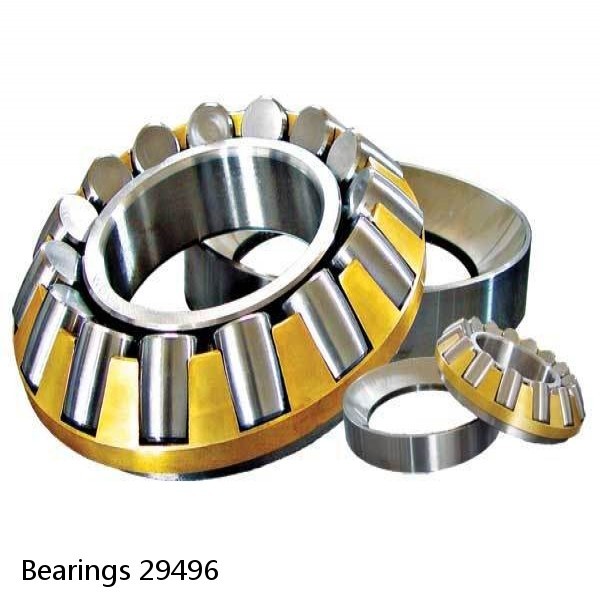 Bearings 29496
Bearings 29496 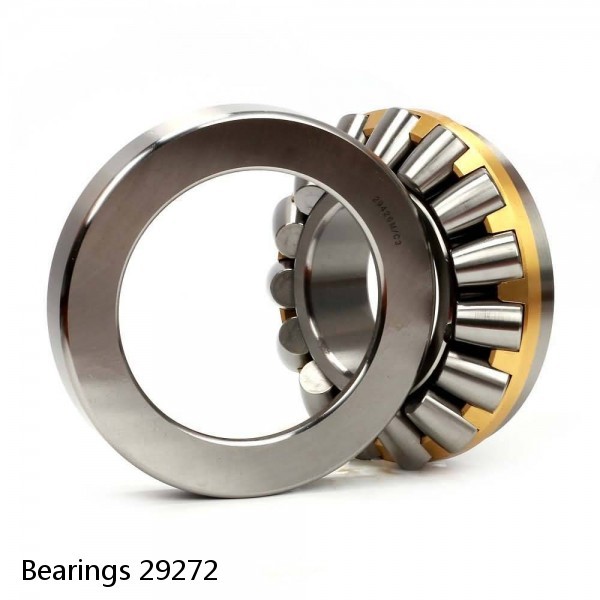 Bearings 29272
Bearings 29272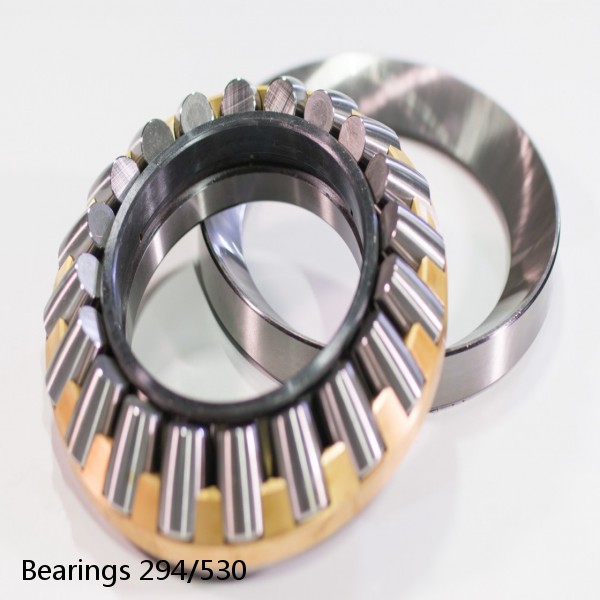 Bearings 294/530
Bearings 294/530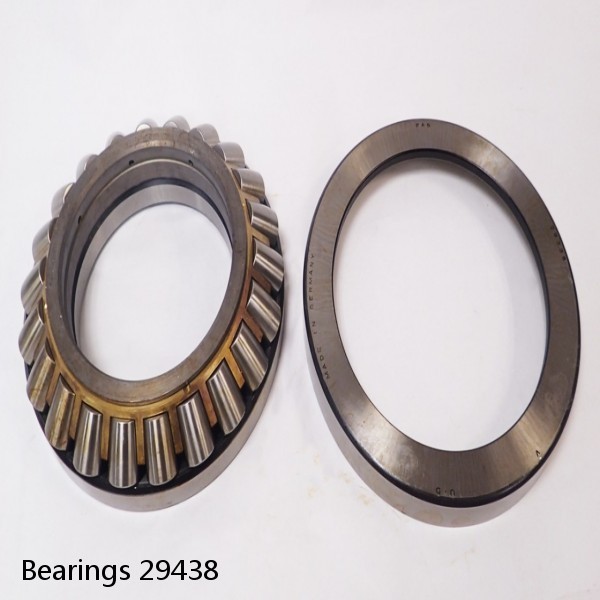 Bearings 29438
Bearings 29438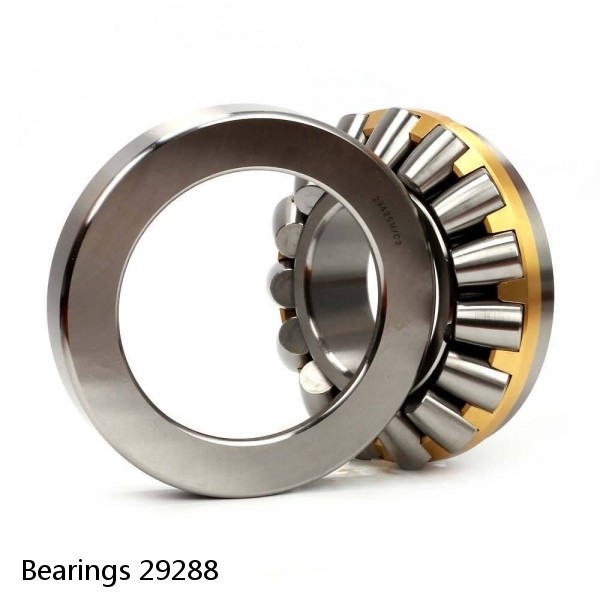 Bearings 29288
Bearings 29288